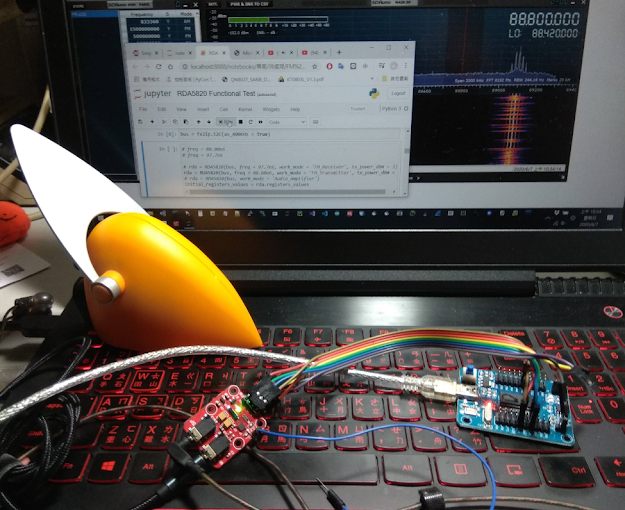Why this
With these strategies, it is now much easier to develop device drivers. Therefore, I wrote Python drivers for several FM transceiver modules (Si4713, RDA5820N, KT0803L). Repository is here.
Transceiver modules
How to use
- Usage and test methods are here and here。
- USB-I2C converter is required if you want to control transceivers with PC, options are:
- Using FT232H with Bridges package as USB-I2C converter。
- Using FX2LP with this firmware, cheaper and faster. Also, FX2LP package is required.
- There are xxxxx_proxy.py modules with smaller size to be used on ESP32.
Test Results
Si4713
Basic functional test
with FX2LP USB-I2C converter and Jupyter notebook
Basic functional test
with ESP32 and MicroPython Remote Kernel + Jupyter notebook
RDS transmission test
RDA5820N
Basic functional test
KT0803L
to be added
Dependencies:


